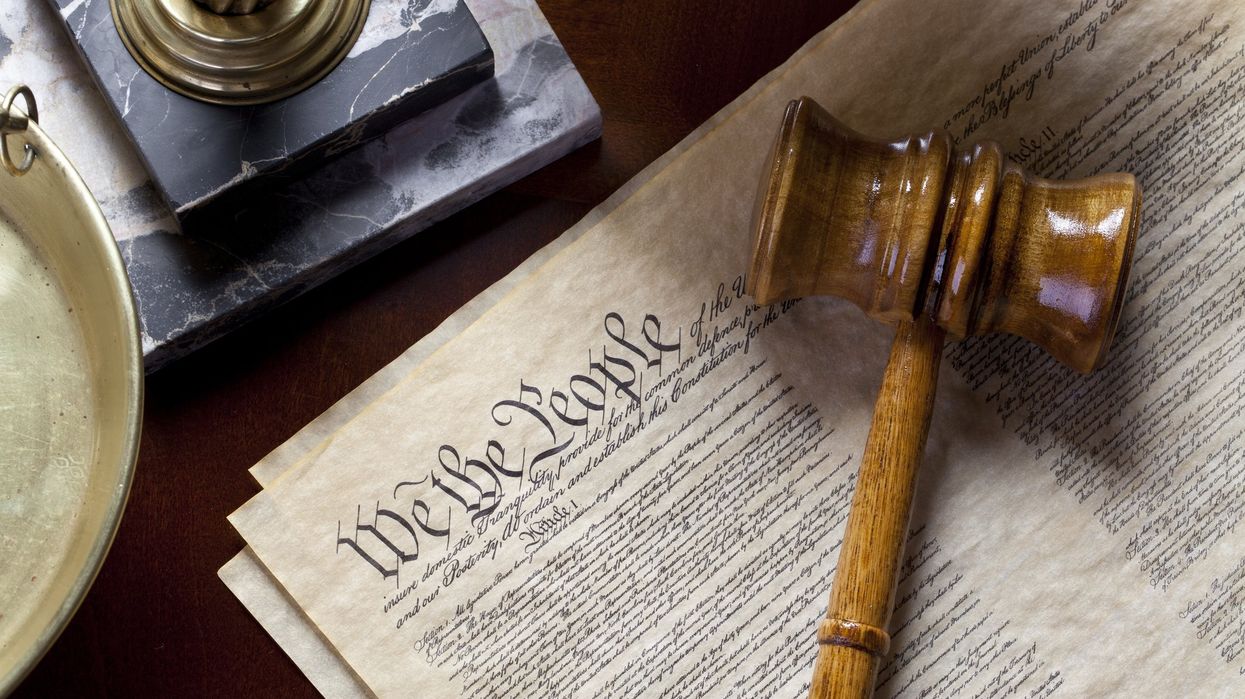Democracy is in danger. Voter suppression efforts are once again on the rise, most recently embodied in the reintroduction of the “SAVE Act.” Initially passed by the House in 2024 and revived again in April 2025, the bill proposes new identification standards for voting.
It calls to eliminate the use of driver’s licenses and state IDs and require birth certificates instead. While billed as an election integrity measure, this legislation is a thinly veiled attempt to disenfranchise millions of eligible voters, particularly the elderly, minorities, and low-income Americans who may lack access to original documentation.
To be sure, this is not about protecting elections. It’s about controlling who gets to vote. It's about power.
Equally alarming are President Donald Trump’s recent comments suggesting he is seriously considering a third term as president, despite the explicit limits imposed by the 22nd Amendment. He even hinted at “methods” that could allow him to bypass constitutional constraints.
This is not harmless bravado or hypocritical hyperbole. These statements have prompted real political maneuvers. Representative Andy Ogles (R-Tenn.) has proposed an amendment to repeal the 22nd Amendment, allowing Trump to run again.
Others have floated legal theories and hypothetical scenarios in which Vice President J.D. Vance could be elected president and somehow cede power back to Trump. While such tactics may be legally dubious, the mere fact that they're being discussed at the highest levels of government signals a chilling disregard for constitutional norms.
What the country is witnessing is an attempt to centralize power in defiance of democratic principles. It is an attempt to reshape the Constitution and the electoral system to serve a singular political and ideological interest. This movement does not seek to represent America; it seeks to dominate it. It trims the Constitution not for clarity but for control. It rewrites laws not for justice but for power. It appeals not to the collective good but to a narrow base of fervent loyalists.
Fealty is very real. This is not democracy. It is autocracy wearing a red, white, and blue mask.
The 50501 Movement —standing for 50 Protests, 50 States,1 Movement—organized 700 protests against Trump in cities across the country on Saturday, with hundreds of thousands turning out, some with signs, saying, “No Kings.”
This follows the April 5 protest in 1400 events where more than five million protesters attended the peaceful “Hands Off” protests against Trump and his administration.
These are signs that Americans know they cannot afford to be complacent. The defense of democracy requires more than voting every four years. It demands constant vigilance, civic engagement, and an unwavering commitment to the rule of law.
It is urgent to challenge legislation like the SAVE Act that disenfranchises voters under the guise of “integrity.” People must reject efforts to bend or break the Constitution to accommodate any leader’s ego. And it is critical to hold accountable those who seek to exploit our democratic institutions for personal gain.
But it was possible to see this all coming. In December 2022, Trump, then a former president preparing to reclaim power, posted a startling message on his social media platform, Truth Social.
Referring to the unfounded allegations of election fraud in 2020, he wrote that “a massive fraud of this type and magnitude allows for the termination of all rules, regulations, and articles, even those found in the Constitution.” His statement was a direct challenge to the rule of law and the very foundation of American democracy.
This was not just an impulsive remark. It was a declaration of intent. It was a glimpse into a worldview where the Constitution is conditional, elections are suspect, and power is the ultimate end. From that point onward, the president’s actions and rhetoric have increasingly demonstrated a systematic effort to undermine the democratic process in the United States.
Even before that, this erosion began with relentless attacks on the legitimacy of the 2020 election with the attacks that culminated in a deadly insurrection at the Capitol on January 6, 2021.
But the assault on democracy didn’t end there. President Trump and his allies have worked to impose restrictive voting requirements, weaken institutional safeguards, and sow doubt about the electoral system itself. These aren’t isolated incidents; they are coordinated maneuvers to make electoral outcomes more reflective of one man’s ambitions than of the will of the people.
Looking ahead to another presidential election cycle in less than four years, this dangerous trend is intensifying.
The strength of a democracy lies not in the power of its leaders but in the voice of its people. When that voice is silenced, whether through misinformation, voter suppression, or constitutional manipulation, democracy suffers.
The country is at a crossroads. One path leads toward authoritarianism dressed up in patriotic rhetoric. The other leads to a renewed commitment to liberty, justice, and representative government. The choice is ours, but only if we have the courage to make it.
To preserve democracy, the response must be as strategic and forceful as the threats it faces. One response is legislative actions. Congress must pass voting rights legislation that establishes national standards for voter access, including protections for early voting, mail-in ballots, and automatic voter registration.
The proposed John R. Lewis Voting Rights Advancement Act of 2025 and the Freedom to Vote Act of 2021 have not been passed into law but remain vital blueprints.
Another safeguard is the judicial system. Courts must remain a firewall against unconstitutional overreach. Lawsuits challenging voter suppression tactics and unconstitutional power grabs must be vigorously and continuously pursued. All judges must be held accountable to the law and not allowed to practice partisan ideology.
States and counties need to be resilient and should modernize voting systems to be secure, accessible, and verifiable. Paper ballots, audits, and strong cybersecurity protections must be a staple in a functioning democracy.
Protecting democracy requires more than just opposing bad policies; it requires building better systems, demanding accountability, and ensuring that the institutions meant to serve the people remain in the people’s hands.
It is unwise to wait for another constitutional crisis before taking action. Americans must be proactive not just reactive. Everyone must meet the threat head up and head on with clarity, unity, and resolve.
Our democracy is not a given but it is a choice. Choose America. Choose.



















